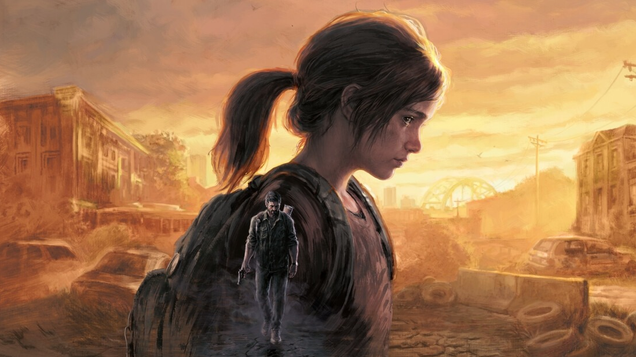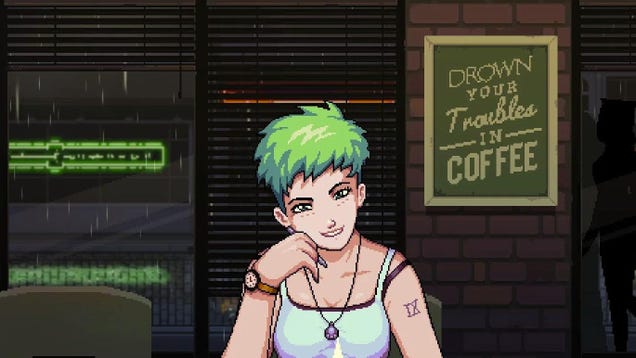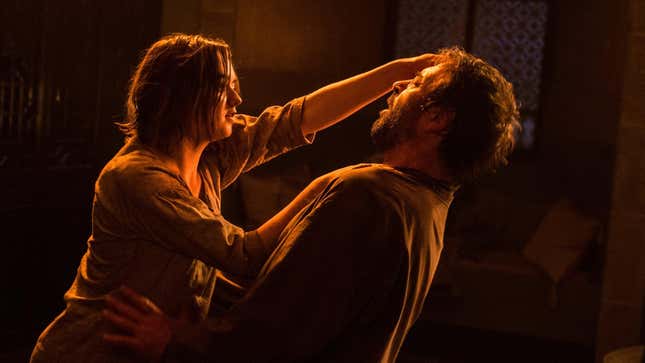
It’s been thirteen years since HBO’s Game of Thrones debuted, and five years since the acclaimed adaptation of the George R.R. Martin saga wrapped. During that time viewers were feted with a staggering death toll and a compendium of medieval torture methods that would make even Genghis Khan wince. No show since has come close to rivaling GOT’s torture porn vibes—honorable mention to The Walking Dead—which saw characters meet their makers in just about every conceivable way the fetid mind could conjure. (Remember Tywin Lannister’s crossbow end on the toilet? The King’s Landing version of passing in your slumber.)
But nature is healing, even in Westeros, and fans can be forgiven for forgetting the heat index of dragon’s breath. This summer’s return of House of the Dragon jolted viewers back into the butcher shop. Just how violent is the second season of the George R.R. Martin prequel series? Its premiere episode, “A Son for a Son,” featured a mother forced to play Sophie’s Choice over which of her infants would die, followed by the off-screen beheading of the tot. Visceral sound effects have always been a GOT superpower, and there was no avoiding the excruciating horror of the child’s fate, even if viewers didn’t actually see it. (It was bad, though apparently not bad enough for Vulture to declare that it “should have been nastier”.)
So what’s in store for the rest of the season, which culminates in early August? If past is prologue, grab a pillow to shove your wrenched face in, lest you catch a glimpse of the carnage, which promises to be as creative as it is excruciating. Of course, not all deaths are created equal. In our own twisted game of “Would You Rather?”, we ranked the Game of Thrones franchise’s worst ways to die, including House of the Dragon’s recent kill list. Even for the fabled Targaryens, the night is long and full of terrors.

The GOT color palette rarely deviated from mud browns and burlap taupes, save for the occasional visit from a Dornish royal and the regular spilling of blood. Which is why Wildfire proved so visually stunning. If you thought dragons were ridiculous, how about a barrel of highly explosive primordial plutonium, capable of leveling all of Flea Bottom? Cersei could have easily ordered the murder of the High Sparrow, but she required something far more baroque—a statement, if you will—to uproot the extremism that had taken hold in King’s Landing, something that would send a clear message across the kingdom: merciless kings are one thing, but charismatic cult leaders are quite another. In terms of sheer scale, there was no turning away from the spectacle of the Sept engulfed in a radioactive glow, taking with it Margaery, Loras, the High Sparrow, and countless bystanders. As far as denouements go, we can only assume it would have been (blessedly) fast for those trapped inside, though pity those on the outskirts of the blast site, forced to deal with the charry aftermath. The sheer scale of the massacre stood in stark relief to the low-key reaction of sweet, guileless Tommen who, numbed by the sight, simply jumped from a window of the Red Keep.
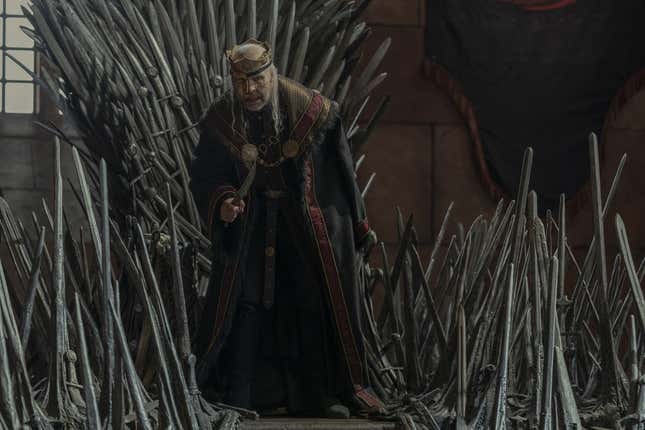
You’d think we’d have seen more deaths from a simple infection in the Game of Thrones universe, but Viserys was a rarity. Apparently maesters can milk a puppy, but can’t clean a wound with soap. Go figure. In short order, an infected cut on his finger spreads like leprosy, rotting his mind and flesh. By the end of his life, he is hideous—half his face decayed, shielded by a gold mask; the other half cadaver-like, pockmarked with open sores and mangled teeth. His diseased body wasn’t just hard on the eyes, though there’s nothing quite like the humiliation of a king whose mere visage disgusts his subjects; but you could practically smell him through the screen as he lost control of his faculties, a cringey reminder that sometimes even a “natural death” is no relief at all.

The Sand Sisters were hardly fan favorites, and killing them off ended one of the series’ more frustrating subplots. Bonus points if you can recall the names of the other sisters, let alone how they met their ends. The exception: Tyene’s death, which made for an especially haunting bookend, the ultimate revenge fantasy. Recall that Cersei’s daughter Myrcella was killed by a lethal kiss from Ellaria Sand, retaliation for the grisly death of her lover Oberyn Martell by Cersei’s henchman Gregor Clegane. We knew it wouldn’t end well for the Sands, that Cersei always gets the last laugh. Sure enough, Mama Sand and her daughter are captured by Euron Greyjoy and gifted to their archenemy, who chains them to opposite walls of a cell. While Ellaria is forced to watch, Cersei delivers the same poison-laced kiss to Tyene that killed Myrcella. Viewers were left to wonder how long Ellaria was left to molder down there, with nowhere to look but straight ahead, at the decaying body of her daughter.
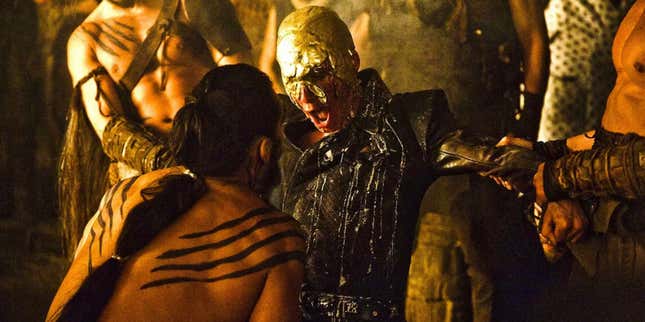
An absolute shit brother, Viserys (a descendant of King Viserys I) pimped out his sister Daenerys to the Dothraki in his quest to reclaim his birthright. Even after she’s married off to Khal Drogo, a brute with a heart of gold, Viserys subjects his kid sister to threats and taunts until finally, the Khaleesi has had enough and gives him what he’s been pining for: the golden crown. As he pleads for mercy, Drogo’s men hold him down and pour searing molten on his head. Both Dany and Drogo remain emotionless as Viserys screams for mercy.
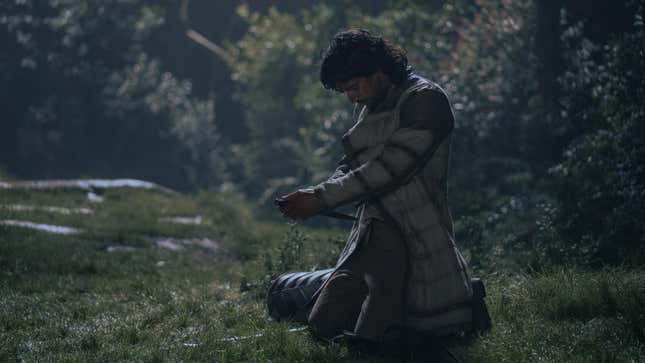
As far as murders go, Joffrey Lonmouth’s death at the hands of Ser Criston Cole of the King’s Guard is rather conventional, though shocking nonetheless. Criston is cast as a sympathetic naif, all googly-eyed for Princess Rhaenyra after they spend a night together. He thinks he’s in love, but is rebuffed—Rhaenyra will wed a closeted Laenor to fulfill her royal duty, though she wouldn’t mind keeping Criston for booty calls. He’s crushed. Who can blame viewers for rooting for him, the strapping underdog with the broken heart? But when Laenor’s lover Joffrey makes some ill-advised remarks to Criston about their shared indiscretions with the bride and groom, Criston snaps, battering Joffrey with unrelenting blows until he is dead. It’s a ghastly turn, entirely unexpected, stark evidence that it’s always the quiet ones that you need to watch out for.
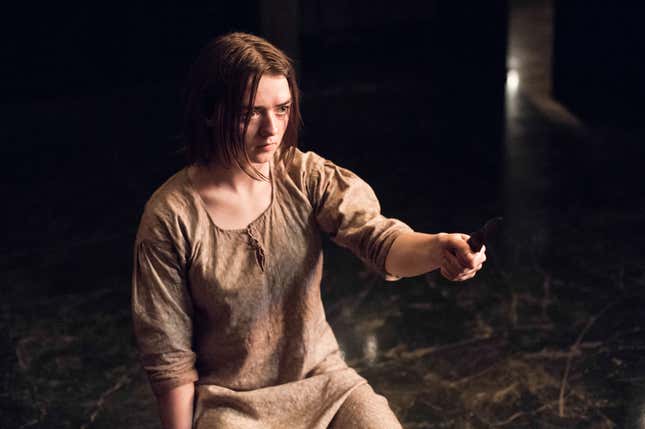
There was no doubt Meryn Trant was a dead man walking once Arya Stark added him to her kill list—he’d murdered her beloved mentor Syrio Forel, after all. GOT usually reserved its most excruciating exits for its most heinous villains, and Trant, a particularly sadistic member of the King’s Guard, was no exception. Arya exploits his predilection for abusing young girls by disguising herself as one of his victims before revealing herself and stabbing him in the eyes. It’s a particularly horrific scene from the get-go, as Meryn whips the frightened girl and viewers brace themselves for lord-knows-what to come. (GOT took much flack for its depictions of child abuse and rape.) Once Arya reveals herself to him, there’s a sudden spasm of violence as she plunges daggers into his eyes, rendering him blind while she proceeds to carve him up. Trant deserved it, no question, which is partly why it’s so rarely mentioned among the series’ more violent scenes. But it’s also one of those “did I just see that?” moments best forgotten.
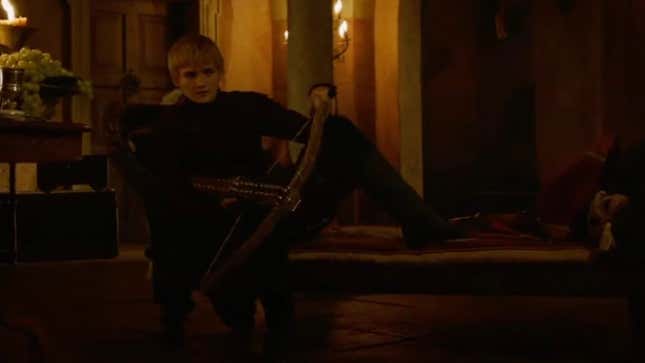
We knew Joffrey was truly sick in the head, but Ros’ murder by the young king is arresting for its sheer brutality. We only catch a glimpse of the poor woman, strung up and limp, her body riddled with arrows, but it’s clear this is torture quite unlike any other. Joffrey takes a sadistic pleasure in her execution by crossbow, his new toy. GOT is, among other things, a paean to the depravity of men, but Ros’ murder highlights the terrifying extent of our cruelty. That horror is amplified by the fact that Ros is a relatively innocent character, playing a lethal game she never had a chance of winning. As Cersei once told Lord Baelish, the man who turned Ros over to Joffrey, “power is power.” Those without any are ultimately vulnerable playthings in the brutal world of Westeros.
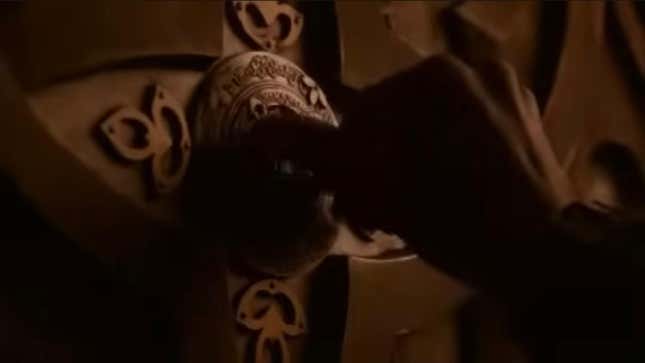
There are quite a few executions in GOT that tease viewers with only a hint of what’s to come rather than depicting what actually does. It’s a sinister gambit, inviting audiences to conjure horrific outcomes of their own. (Remember Season 3’s Sorcerer in the crate?) When Daenerys returns to Qarth after successfully retrieving her stolen dragons, she confronts Xaro Xhoan Daxos, the wealthy merchant who betrayed her in his bid to become the King of Qarth. Discovering that Daxos’s wealth is a facade and his vault is empty, Daenerys exacts her revenge by sealing him and her handmaiden Doreah, who also betrayed her, inside the vault. It’s a ruthless move that (presumably) subjects the pair to a slow, agonizing death, entombed in darkness. The takeaway: cross the Queen of the Andals at your own peril.
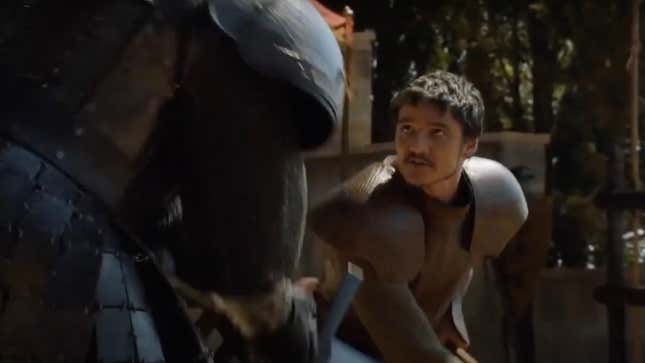
Who wasn’t rooting for Oberyn Martell, Tyrion’s charismatic proxy in his trial by combat, to whomp Gregor Clegane, the hulking ogre known as The Mountain? Things look promising for the Red Viper until The Mountain gets the better of him. In one of the series’ most graphic murders, Clegane grabs Martell’s head with his bare hands and squeezes so hard his skull actually bursts. The explicit violence—there are close-up shots and sounds of bones cracking—makes the scene particularly difficult to watch. Yet the gruesome spectacle is emblematic of not just the unpredictable and unsparing violence that marked the series, but the moral ambiguity that surrounds these deaths. From the very outset of the show, when Eddard Stark is unjustly executed, we are forced to wrestle with the senseless loss of good people, often at the hands of awful people. That helps explain the very appeal of Oberyn Martell—he’s a lover, not a fighter, with a strong sense of justice and love. Losing him is a searing reminder that Westeros is no place for the sentimental.

“I’d hate to die like your son,” Lady Olenna Tyrell tells Jaime Lannister, in her stunning Season 7 confession. “Clawing at my neck, foam and bile spilling from my mouth, eyes blood-red, skin purple.” The poison effectively choked Joffrey of oxygen, triggering violent convulsions as he unsuccessfully gasped for air. So desperate were his attempts to breathe that the blood vessels in his eyes and nose burst. Worse yet was the evident panic. Surrounded by guests at his own wedding, Joffrey would die alone, unable to even summon help. The terrified, lifeless head of the poisoned boy king is one of the show’s most enduring images.
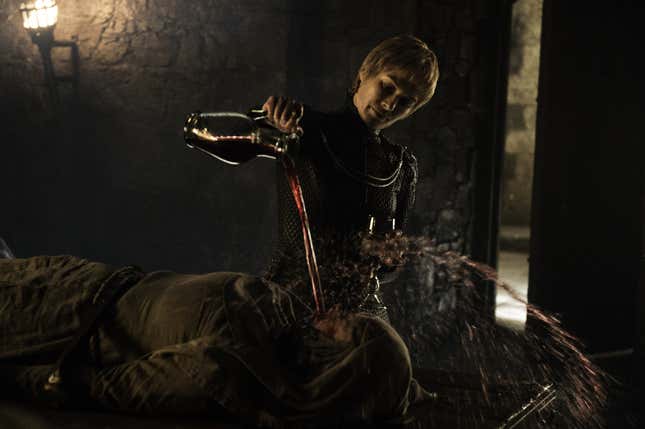
After enduring humiliation and torture at the hands of the Faith Militant, Cersei exacts her revenge on Unella, the septa who was particularly cruel to her. Chained to a table, Unella is waterboarded with wine as Cersei plies her with the same rebukes directed against her: Confess! Confess! Unella knows she’s doomed, and tells Cersei, “I am ready to meet the gods.” Of course, Cersei has other plans. She tells Unella she’s not going to die for a while, then summons The Mountain to the room. “This is your god now,” she tells Unella, visibly terrified. Cersei leaves the pair as Unella’s squeals of pain echo. Once again, the hint of the savagery to come is arguably more traumatic than even knowing what The Mountain will do to her.

Arguably Game of Thrones’ most defining moment, the Red Wedding proved so shocking, so unimaginably brutal, that it instantly became a pop culture meme, shorthand for a seemingly upbeat event that takes a startling, sinister turn. (“It’s like the Red Wedding,” former President Obama joked at the 2016 White House Correspondents’ Dinner, as he noted how many Republicans were in attendance.) What begins as a celebratory feast ends in a massacre as Robb Stark, his mother Catelyn Stark, and his pregnant wife Talisa, are slain by their supposed allies, the Freys. The violence is graphic and thoroughly unexpected—after all, the Starks are the nucleus of the show, its heroes. It is a barbaric display, exceptional even for cable television, and ranks up there with “Who Shot J.R.?” as one of tv’s most eye-popping plot twists.
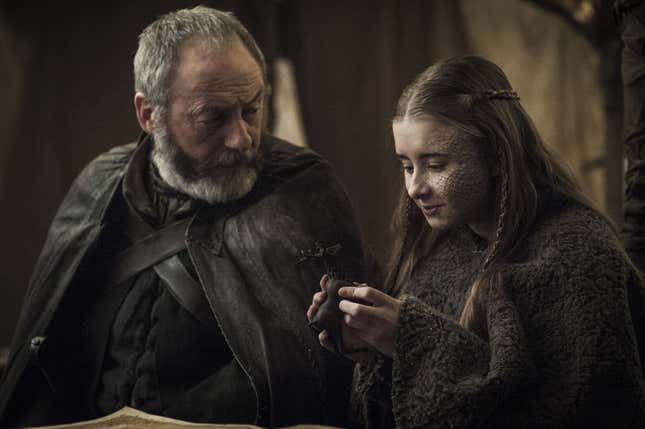
One of the most enduring criticisms of GOT is its depictions of violence against children. No scene exemplifies that more than the disturbing death of young Shireen, the only child of Stannis Baratheon. She is the metaphorical sacrificial lamb, innocent, blameless, but nonetheless sacrificed to the so-called Lord of Light by her father to ensure his victory in the War of the Five Kings. It’s a wrenching decision. We’ve come to delight in the precocious little girl who overcame greyscale with dignity and grit. It’s virtually unwatchable: Shireen is tied to a pyre and burned alive while her parents and soldiers look on. Her screams are heart-rending, and the scene is made even more tragic by her parents’ reactions. Stannis remains stoic but is clearly tormented; Selyse initially supports the sacrifice, but breaks down in horror and regret as the reality of their actions sets in. It’s a brutal and unforgiving killing, senseless, and ultimately futile.
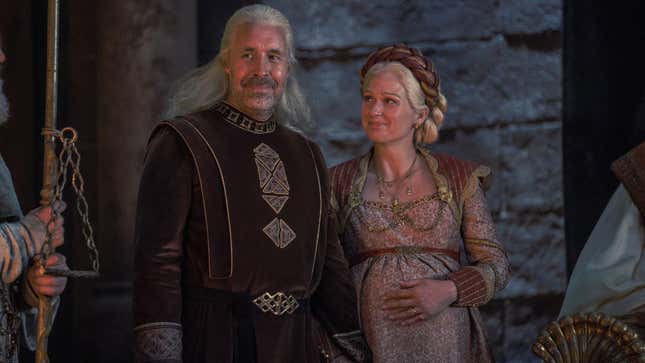
Of all the deaths in the Game of Thrones pantheon—the beheadings, stabbings, poisonings, drownings, suffocations, flayings, suicides, burnings, beatings, explosions, and zombie attacks—very little beats the intensely traumatic, harrowing childbirth of Aemma Arryn, wife of King Viserys, in the series premiere of HoD. It is the most realistic of any Game of Thrones death, an unforgettable depiction of the brutalities of childbirth. Aemma’s labor becomes complicated, and it quickly becomes evident that both her life and that of the unborn child are in grave danger. King Viserys, desperate for a male heir to secure the Targaryen succession, faces an excruciating decision when he is informed that the only way to potentially save the baby is through a risky and primitive cesarean section, which would almost certainly result in Aemma’s death. Torn between his love for his wife and his duty as king, Viserys decides to proceed with the procedure. Needless to say, you won’t soon shake the grim sights and sounds of it all.
Depicted with graphic detail and emotional intensity, Aemma is forcibly held down as the maester makes the incision without anesthesia. She dies in agony, begging for her life, grimly aware of the fate that’s been chosen for her. That the baby doesn’t survive is almost beside the point (though it sets in motion the internecine war within House Targaryen). Both GoT and HoD are, if nothing else, odes to the horrors humans inflict on one another. But very little compares to the brutalities inherent in simply living.
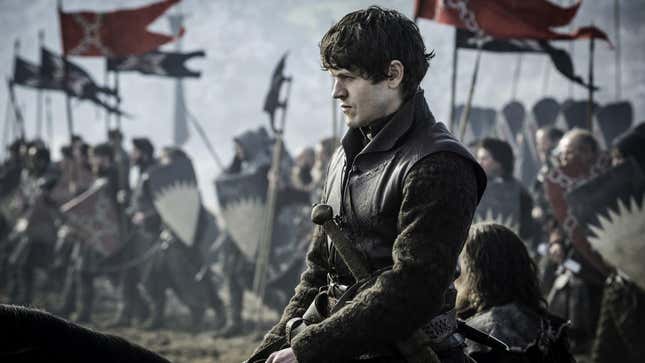
Perhaps it’s the poetic justice of knowing GOT’s resident sadist is about to get his due; that the hounds he starved for seven days would now be sicced on him. It’s the comeuppance nobody would begrudge, yet it is sickeningly brutal, truly beyond the pale. The hungry dogs lick Ramsay’s bloody face, whetting their appetites for what’s to come. There’s no need to see what comes next. Once again, the sounds of the feeding frenzy and a screaming Ramsay lend the scene a horrific soundscape. Just how violent is it? So violent that Sansa, brutalized unremittingly and mercilessly by the man before her, can’t help but smile.

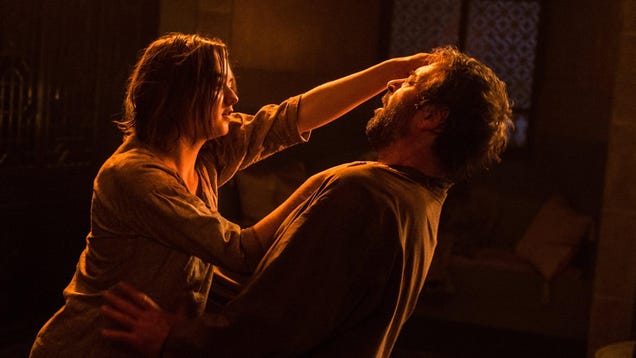
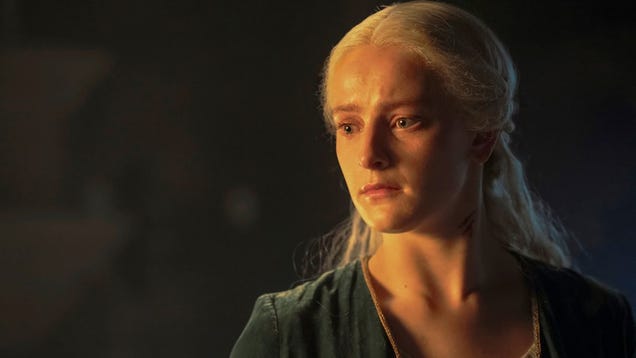
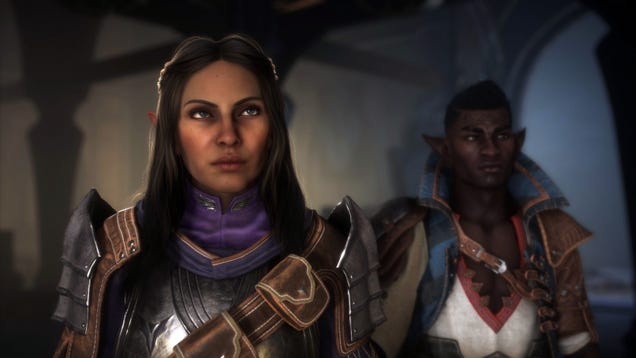
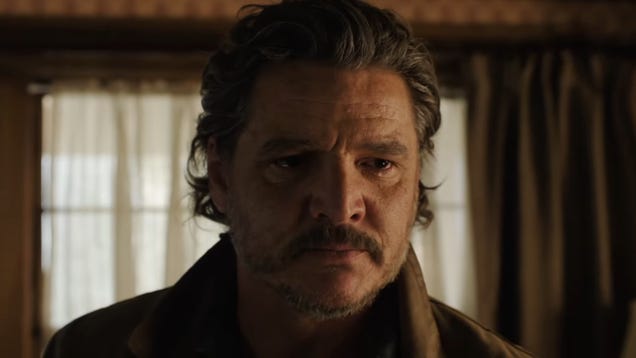
![netflix-horizon-zero-dawn-tv-show-reportedly-in-trouble-[update]](https://bigoshops.com/wp-content/uploads/2024/07/10136-netflix-horizon-zero-dawn-tv-show-reportedly-in-trouble-update.jpg)


